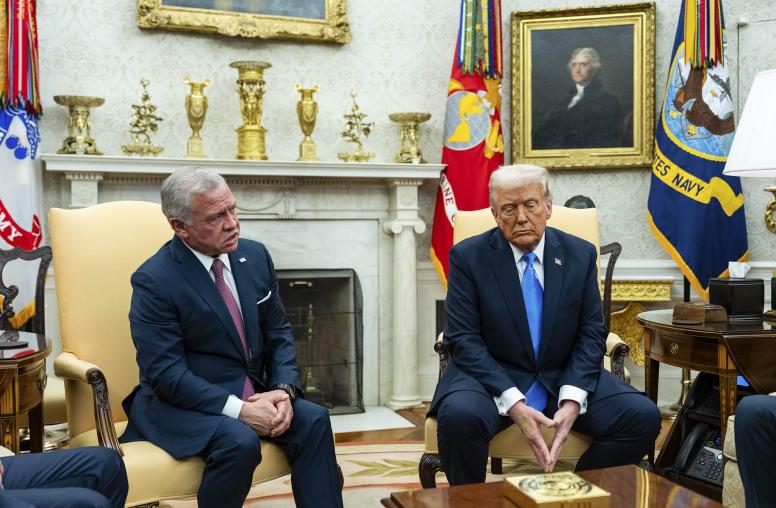Amid this year’s rising tide of violence between Israelis and Palestinians, a new poll released last week by Khalil Shikaki and Dahlia Scheindlin brings more sobering news. In the study, pollsters found that in Israel, for the first time, support for a nondemocratic regime (unequal rights between Israelis and Palestinians) is stronger than a two-state solution to the Israeli-Palestinian conflict. Trends among young people are especially striking — only 20 percent of Israeli Jews aged 18-34 are in favor a two-state solution to the conflict.
In Israel and the Palestinian Territories, burgeoning youth populations are increasingly making their presence felt in the news and in larger socio-political trends. Israeli and Palestinian youth constitute a swelling portion of both societies: Israel’s median age is 30, while the median age in the Palestinian Territories is 21. And in the escalating clashes, young people have been highly represented in the victims and perpetrators of violence.
With these trend lines becoming increasingly apparent among target populations for peacebuilding programs, in 2020, the Alliance for Middle East Peace (ALLMEP) and USIP commissioned a study of Israeli and Palestinian youth, ages 15-21. The polling and focus groups — also conducted by Scheindlin and Shikaki — aimed to deepen the understanding of this understudied cohort’s views of “the other,” to learn how this rising generation views the prospects of resolving the Israeli-Palestinian conflict and to evaluate areas of opportunity.
In this video, Lucy Kurtzer-Ellenbogen, director of USIP’s Israel, the Palestinian Territories, and the Region Program, and ALLMEP Executive Director John Lyndon discuss this research around youth attitudes in light of current developments, and its implications for the Israeli-Palestinian conflict, peacemaking and peacebuilding.
In the realm of challenges:
- Among both Israelis and Palestinians, just about half on each side believed that a political resolution can actually bring peace. And by a clear majority, each side believed that violence is the only or best way to achieve concessions from the other side.
- Majorities of both cohorts rejected the other side’s claims of historic, national connection to the land. In the most recent poll of the societies as a whole, 93 percent of Palestinians and 68 percent of Israeli Jews reject the other side’s claims.
- Among youth on both sides, support for the two-state solution continues to show a serious decline — not enjoying the support of a majority of respondents on either side. In 2020-21, support for a two-state outcome held pluralities in the age 15-21 cohort, while the most recent poll found that among Israeli Jews aged 18-34 only 20 percent support a two-state outcome.
In the realm of opportunities:
- Interestingly, only a small proportion of each cohort in the USIP-ALLMEP poll — just 12 percent among Israelis and 13 percent of Palestinians — favored the status quo as the preferred option, indicating perhaps more interest in disruption and change among youth than is the case for older compatriots (for example, a 2021 Israeli Democracy Institute poll found that 41.5% of Jewish Israeli adults favored the status quo).
- Despite widespread negative emotions, a strong majority on both sides expressed respect for the majority religion of the other: Jews respecting Islam and Palestinians respecting Judaism. At present, high levels of religious observance correlate strongly with hardline attitudes; but the findings suggest future opportunities for religiously grounded engagement to bridge divides rather than deepen them.
- In contrast to the broadly negative opinion trends regarding the conflict, a majority of respondents on both sides expressed the view that peace is possible between the two peoples, and the conflict is mostly about leaders fighting for their own interests.
While fewer than 10% of either population had ever engaged in a meaningful way in peacebuilding programming, and there was skepticism about the efficacy of doing so, only 30% of Israeli Jews and 29% of Palestinians in the 15-21 cohort believed that cross-border peacebuilding efforts were illegitimate and that they would therefore not participate. This highlights the potential to leverage new resources for peacebuilding — such as the Middle East Partnership for Peace Act (MEPPA) and related civil society investment — to positively disrupt hardened attitudes and pessimism.



